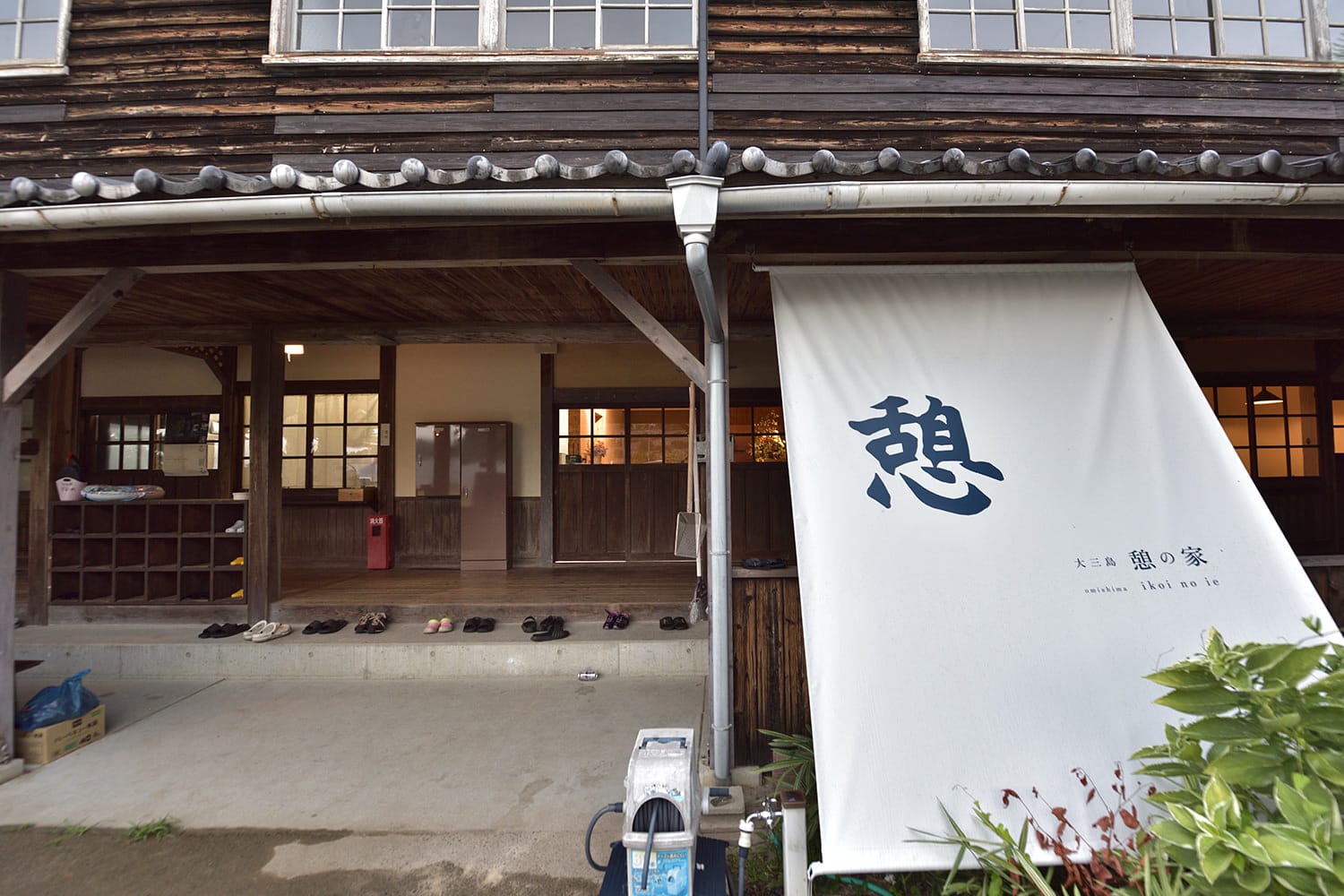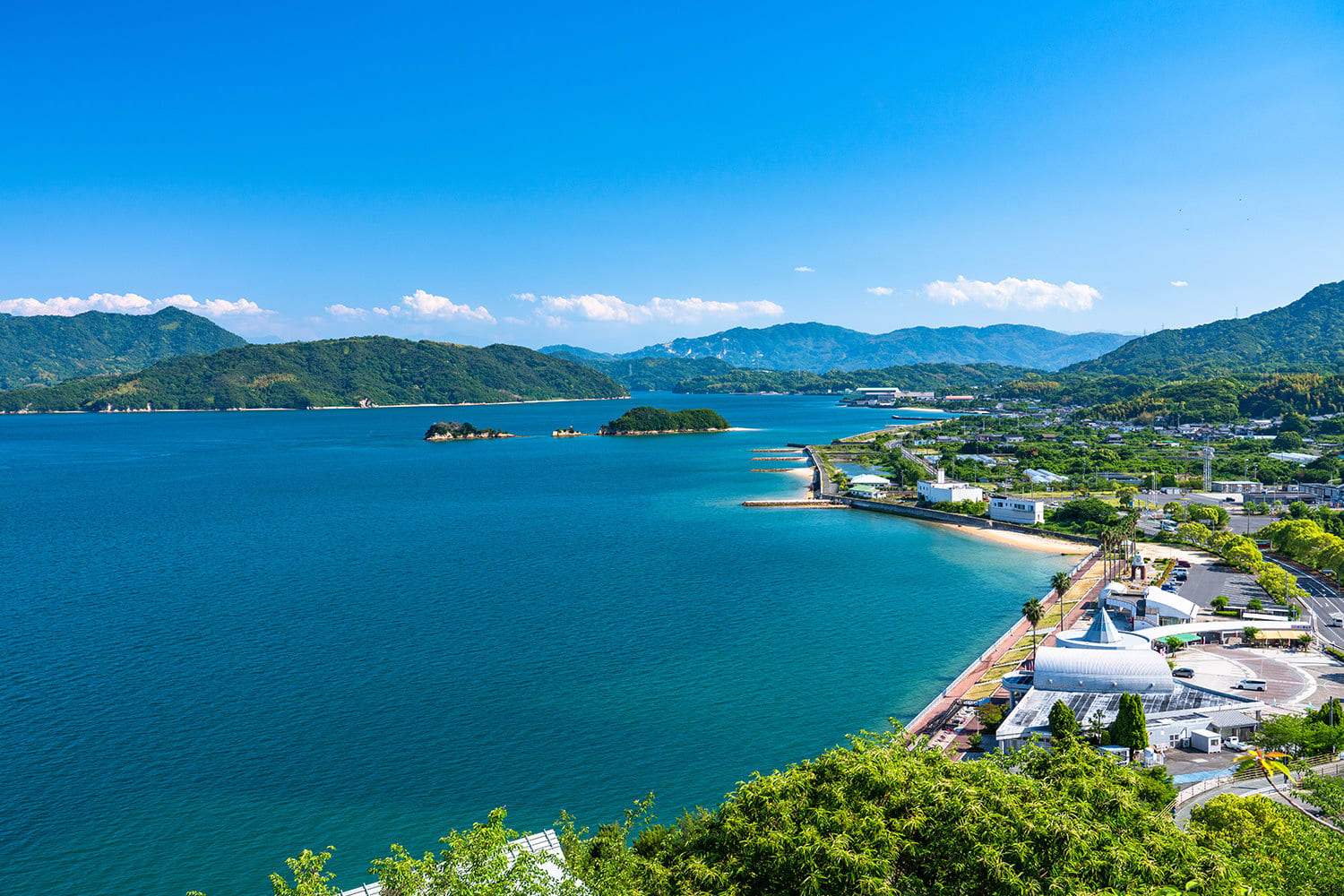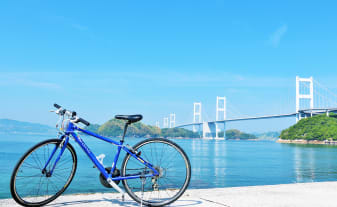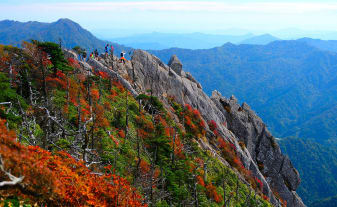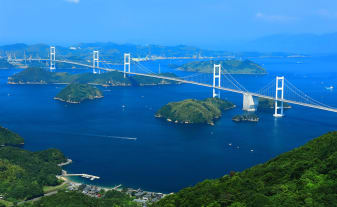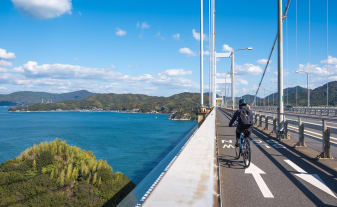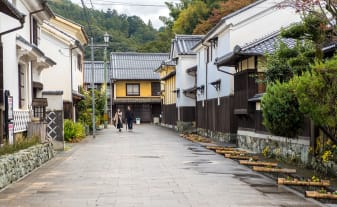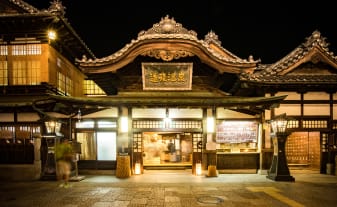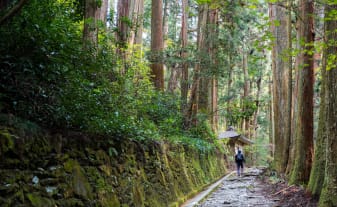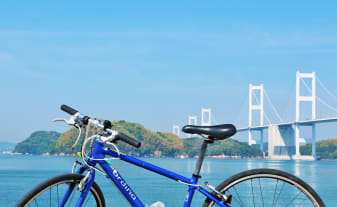 STORIES & GUIDES
STORIES & GUIDES
A Sustainable Cycling Adventure in Ehime

Slow down and immerse yourself in the beauty and warm hospitality of Ehime, enjoying authentic and meaningful interactions with local communities as you cycle through the prefecture. By prioritizing sustainable travel choices—from transportation and accommodation to activities—you help preserve natural landscapes, support local businesses, and reduce your carbon footprint.
Experience Ehime’s sustainable practices as you travel along the Shimanami Kaido cycling route, stay in repurposed accommodations, and explore traditional townscapes that have been reawakened through community efforts.
-
Cycling along the Shimanami Kaido
The Shimanami Kaido runs between Imabari in Ehime and Onomichi in Hiroshima and connects six islands in the Seto Inland Sea. There are a range of services and accommodations tailored to cyclists along the route, to help you make the most of your journey.
CycloTourisme Shimanami is a private nonprofit organization that promotes sustainable travel through leisurely guided tours covering lesser-known spots and byways of the islands. CycloTourisme Shimanami also manages rest areas where cyclists from around the world can share their experiences. Other noteworthy cycling facilities along the route include Shimanami Omishima WAKKA which has repair services and accommodations with views of the Seto Inland Sea. -
Omishima: bringing new life to an island community
The island of Omishima is approximately halfway along the Shimanami Kaido. There are various revitalization projects and community activities undertaken on the island to create new job opportunities and reverse its declining population. Many are supported by renowned architect Toyo Ito who contributes to the sustainable growth of the island through his NPO, the “Omishima Lifestyle Laboratory.”
Omishima Ikoi-no-Ie is a former elementary school that now serves as a family-run hotel. The more than 80-year-old building was renovated under the guidance of Toyo Ito. While many of the facilities have been converted into comfortable guestrooms, some parts of the old school have been preserved such as the original wooden walkways between buildings, the library, and the dining hall. Meals served here make use of locally harvested produce and seafood.
Mikan oranges were a major pillar of the Omishima economy, but as the island’s population aged, the number of farmers available to cultivate the fruit shrank. To inject new life into the area, abandoned mikan orchards were transformed to cultivate wine grapes, and the Omishima Minna no Winery was opened in 2019. The initiative has brought young winemakers to the island, and local orange farmers provide their expertise in working with the area’s soil. Wine tastings and sales are available at Minna no Ie, a community center next to the winery. -
Immerse yourself in island life
Salt House on the neighboring small island of Hakatajima is a guesthouse in the heart of the island’s residential area, where guests can fully immerse themselves in the local community. Welcoming group stays, the emphasis is on active engagement and involvement. Instead of serving meals at the guesthouse, guests are encouraged to explore local restaurants and stores, fostering connections with the island’s residents. Its relaxed, comfortable atmosphere invites guests to linger, encouraging simple and genuine moments of togetherness.
In Imabari at the end of the Shimanami Kaido, Sunrise Itoyama Cycling Terminal provides bicycle rentals, shower facilities, coin lockers, and accommodations. Guests staying at the Sunrise Itoyama Hotel can join a free cycling tour of the Kurushima Kaikyo Bridge, one of the longest suspension bridges in the world. The tour takes you across the bridge to Umashima Island and down to Uzunohana Beach for views of the famous Kurushima whirlpools. -
Deeper connections: ancient pilgrim routes and a town revitalized
Your cycling journey can continue beyond the Shimanami Kaido as you journey farther into Ehime. The Imabari-Dogo Hamakaze Sea Route takes you along the coast to Dogo Onsen in the capital, Matsuyama. Once there, you can take part in the ultimate slow travel experience that has been practiced in the area for centuries: the 1,400-kilometer pilgrimage route of 88 temples around Shikoku, the Ohenro.
While it takes at least 40 days to walk the entire route, eight of the temples are within the bounds of Matsuyama. You could cycle to one or more of these, or join a guided walk to experience a small part of the pilgrimage instead. One popular guided walk departs from Dogo Onsen and leads 1.4 km to Ishiteji Temple. It includes the option to wear the traditional white pilgrimage attire for the walk.
Farther south in the Nanyo region, the picturesque castle town of Ozu is a testament to the transformative power of sustainable initiatives and their ability to drive economic revitalization. While the town flourished as a trade center until the twentieth century, a subsequent economic downturn saw many of its historical buildings abandoned, left to fall into disrepair. However, through community-led conservation efforts, Ozu experienced a renaissance, emerging as a hub for slow and sustainable tourism. You can book bespoke hospitality experiences that include stays at Ozu Castle and restored merchant houses through the hotel group Nipponia. Cruise the Hijikawa River on a traditional houseboat, dine on local ingredients, and stroll the old townscape. Explore the craft ateliers, shops, and cafes that are contributing to the town’s newfound vibrancy.
-
Museums & Galleries
-
Shrines
-
Hot Springs
-
Cycling
-
Coastline & Sea
-
Art & Architecture
-
Castles
Related Articles
Eastern Ehime (Toyo)
Cycle the Shimanami Kaido, explore the islands and whirlpools of the Seto Inland Sea, and delve into the Toyo region’s industrial heritage.




